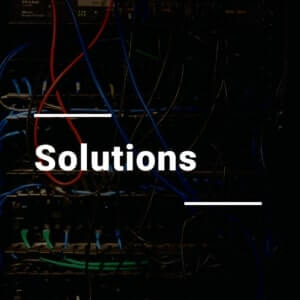 With every shift in global data and AI landscapes, global computing, storage, and networking are also transforming. New data hosting servers require better management and secure networks to acquire, store, process and deliver accurate data. As a leading Intel partner, GigaIO aims to reform the data scene by leveraging existing hardware and converting it into technological advancements.
With every shift in global data and AI landscapes, global computing, storage, and networking are also transforming. New data hosting servers require better management and secure networks to acquire, store, process and deliver accurate data. As a leading Intel partner, GigaIO aims to reform the data scene by leveraging existing hardware and converting it into technological advancements.
The current data environment faces various challenges that affect organizations and their clients. AI workloads and algorithms change constantly, new high-performance technologies evolve rapidly, and high operational costs make infrastructure maintenance challenging. Furthermore, future-proofing the IT infrastructure is tricky without predicting recent trends.
Moreover, despite the rise of data-centricity, replacing traditional siloed approaches makes adopting sustainable technologies difficult. GigaIO allows companies to benefit from new technologies, such as GPUs and FPGAs, with its scalable Intel Optane solutions. These solutions cater to various industries, such as life sciences, manufacturing, education, and finance, and mold according to their needs and demands
GigaIO FabreX breaks the limitations of traditional static IT infrastructures. It opens new configuration portals with Composable Disaggregated Infrastructure (CDI) to maximize the utilization of elements. It computes the entire rack instead of single servers, allowing organizations to focus on priority tasks and achieve business goals.
AI and ML are core components of all present-day data-based operations. Digitization transforms and reforms the current infrastructure through AI advancements. However, given the enormous data sets, it is essential to build neutral networks, constantly upgrade them, and access GPUs and FPGAs for faster connection and more storage. GigaIO understands the need for agile infrastructure that supports evolving algorithms and uses FabreX to prevent obsolete hardware.
“At the end of the day, what we do is we enable people to take that static infrastructure and make it flexible everywhere from the large cloud service providers—there’s significant interest there—through to the national labs, to universities, to the large corporates that are now bringing in that AI workflow. So, across that board is where we’re saying the interest,” said Alan Benjamin, CEO of GigaIO.
HPC is another integral aspect of data management, as it enables geophysical modeling, weather forecasting, bioinformatics, and physical simulations for faster execution of compute-intensive tasks. FibreX designs a flexible architecture to support rapidly changing workloads, combining sub-microsecond latency and high-bandwidth networking between HPC servers and resources.
GigaIO also provides edge computing to empower its clients. As IoT sensors rise in number, data generation also increases. Therefore, companies must compute instantly to process the generated data. However, data processing requires using resources without space and power limitations. FabreX uses half the power consumption of Ethernet to skyrocket the resource utilization rate, deploy less equipment, increase space, and improve power and thermal efficiency.
The leading Intel partner also enables cloud computing. Whether public or private cloud, virtually optimizing resources requires a key that includes accelerators, storage-class memory, CPUs, and memory. FabreX offers sub-microsecond latency needed to design complete racks for composing resources. GigaIO combines FabreX with its Ready-to-Run software solutions to migrate on-premises architecture to cloud servers with full control and reduced rates, flexibly and efficiently.

Regardless of the size or industry, every organization needs optimum visualization. Visualization provides high performance and capabilities, from high-end workstations and servers to data center racks and the cloud. It offers insights into cutting-edge product design, media, entertainment, research and development, and Virtual Reality. FabreX uses AI to enhance visualization for generating high-quality pictures. It mixes several GPUs and FPGAs in a single platform to accelerate performance, sustainability, and efficiency.
GigaIO has extended its services to various clients across the globe, including the San Diego Supercomputer Center (SDSC). SDSC is a leading high-performance, data-intensive computing company that provides cyberinfrastructure resources, services, and expertise to academic and research communities. SDSC needed a product to meet the demand for a cyberinfrastructure ecosystem made by the National Science Foundation.
SDSC deployed its all-in-one Prototype National Research Platform (PNRP) and merged it with GigaIO’s low-latency FabreX Memory Fabric platform. PNRP and GigaIO’s FibreX interconnected technology. SDSC’s 64 NVIDIA FP64 GPUs and 32 Xilinx Alveo FPGAs, connected by GigaIO GabreX with NVMe storage and x86 compute servers, helped the National Science Foundation meet the demands of next-generation science and research.






